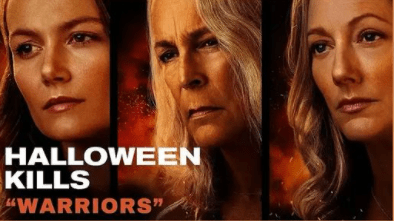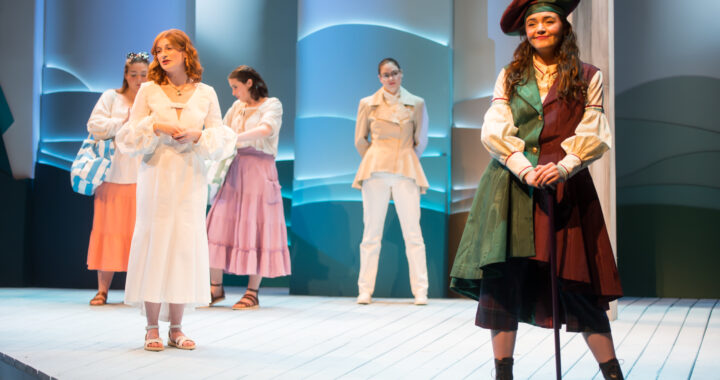“Halloween Kills” offers new perspective in the franchise
4 min read
“Halloween Kills” explores the horror brought to modern day Haddonfield, Ill. by Michael Myers. | @missjudygreer / Instagram.com
by BERNADETTE D’AURIA
Associate Editor
“Halloween Kills” is the latest installment in the decades-long “Halloween” franchise. Released on Oct. 15, the film has been met with a divisive response among horror fans and longtime franchise lovers. With some moviegoers loving the direction the series has taken and others criticizing the sequel for forgoing storytelling for brutal kills, many have wondered if this movie is worth seeing. As a long-time fan of the franchise, I’m here to tell you that, while “Halloween Kills” is not the greatest installment in the series, it is definitely worth a trip to the theater.
With David Gordon Green returning to direct the sequel to his 2018 reboot of the series, much of the film’s cinematography remains the same as the last installment. The only new stylistic decision made was Green’s inclusion of flashbacks to Michael Myers’s original reign of terror of Haddonfield, Ill. These flashbacks are not directly lifted from the 1978 film, but Green was able to recreate sets from the final act of Carpenter’s “Halloween” and mimic the technical design that the original film’s team employed.
While Green’s ability to immerse the audience into the 1978 film once more was applaudable, I along with many others found that this was the start of the film’s faltering story-telling. The flashback may not be the initial shot that opens the movie, but it is a ten-minute long sequence that takes place before the opening credits roll. Furthermore, it is a sequence that focuses on Will Patton’s character, Frank Hawkins, a police officer who was only introduced in Green’s 2018 film. Rather than flashing back to characters like Tommy Doyle and Lindsey Wallace, who are characters from the 1978 film that make a reappearance, Green chose to add depth to a character that is not a primary focus in the previous installment.
The number one gripe that fans and critics alike have with “Halloween Kills” is its lack of focus. One of the main things that was commended by audiences of Green’s 2018 film was how it was able to portray generational trauma through an older Laurie Strode, played by Jamie Lee Curtis, and Laurie’s daughter and granddaughter, played by Judy Greer and Andi Matichak, respectively. Laurie’s experiences with Michael shaped how she went on to raise her daughter and subsequently impacted her relationship with her granddaughter. Their relationship made up the heart of the previous installment, with a huge focus on how these women were able to come together as a family to fight the threat that has been hanging over them for 40 years. However, in “Halloween Kills,” the three heroines are all but separated for the majority of the film. For many, including myself, it was disheartening to see this core relationship side-lined throughout much of Green’s sequel.
One of the biggest gripes I have heard from other viewers is that “Halloween Kills” sidelines Laurie Strode in a way previous installments have not. Green already retconned Strode and Myers’s relationship in his previous film, but his 2021 release takes the stance that the whole time Michael Myers has not been after Laurie Strode. Rather, Michael is just a man (a boogeyman, if you will) whose goal is to kill as much as possible. With the focus of all other iterations of the franchise being on their relationship, it can be hard for some to reevaluate what they have grown so used to.
However, I am a huge fan of this revelation. I think that it is an interesting direction for the series to take and one that honors Michael Myers’s otherworldly obsession with murder. Rather than being focused on one specific person, Myers is just someone who thrives off the fear that he installs in people. Furthermore, I think this change places Laurie in an interesting position within the narrative. Rather than Michael fixating on her, it is she who fixates on Michael to the point of obsession. I think this is a really great twist on their relationship and something that has not been challenged in any other “Halloween” films.
Another plus for this movie for me was the gore factor. I am not usually one for a heavy-handed gore-fest in my horror movies but, because this was my first in-theater horror movie experience since the pandemic, I found myself not minding just how brutal some of the death scenes were. It was fun to cringe alongside fellow fans when an extra drawn-out death scene occurred. While I gladly would have substituted some of these scenes for a tighter story, they ultimately added to my enjoyment level rather than took away from it.
Is this the best film in the franchise? No. However, it is not the worst film that exists in the “Halloween” franchise; that title is reserved for “Halloween: Resurrection.” Green’s film is a fun theater experience that adds a new perspective to the “Halloween” franchise. I am looking forward to where Green is going to take this series, as he is slotted to direct the 2022 finale to the sequel trilogy, “Halloween Ends.”
“Halloween Kills” is currently playing in theaters and streaming on Peacock.











